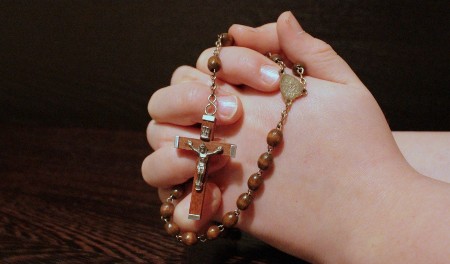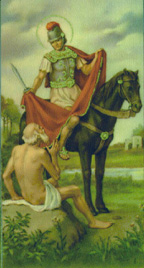 Hi readers, it seems you use Catholic Online a lot; that's great! It's a little awkward to ask, but we need your help. If you have already donated, we sincerely thank you. We're not salespeople, but we depend on donations averaging $14.76 and fewer than 1% of readers give. If you donate just $5.00, the price of your coffee, Catholic Online School could keep thriving. Thank you. Help Now >
Hi readers, it seems you use Catholic Online a lot; that's great! It's a little awkward to ask, but we need your help. If you have already donated, we sincerely thank you. We're not salespeople, but we depend on donations averaging $14.76 and fewer than 1% of readers give. If you donate just $5.00, the price of your coffee, Catholic Online School could keep thriving. Thank you. Help Now >
Ancient See of Linköping
FREE Catholic Classes
(LINCOPIA; LINCOPENSIS.)
Located in Sweden ; originally included Östergötland, the Islands of Gotland and Öland, and Smaaland. The district of Värend in Smaaland was taken from Linköping and formed into the Diocese of Vexiö about 1160. From 990 to 1100 the Diocese of Skara embraced the whole country of the Goths (Gauthiod); it was then divided between those of Skara and Linköping. The first three bishops of Linköping were Herbert, Richard, and Gisle (c. 1138-48). Then came Stenar, who apparently resigned in 1160 and subsequently became Bishop of Vexiö ; Kol (c. 1160-95), who was killed at Rotala, Esthonia, 8 August, 1220, when fighting against the heathen ; and Benedict (1220-37), the first of a long line of pious and munificent prelates, who built and endowed the fine cathedral, which had been begun in 1150 but was not finished at the reformation. Among these was Blessed Nicholas Hermansson (1374-91); educated at the University of Orléans, he had been tutor to Charles and Birger, the sons of St. Bridget, whose body he received when it was brought to Vadstena by St. Catherine. He composed a beautiful Office in honour of St. Bridget, which included the hymn "Rosa rorans bonitatem". The last Catholic bishop of Linköping was Hans Brask (b. 1464; bishop, 1513-27; d. 30 July, 1539), the valiant champion of the Old Learning, who was compelled to leave his diocese in 1527 owing to the adoption of Lutheranism as the state religion at the Diet of Westeraas.
The cathedral of Linköping, the abbey church of Vadstena, and the numerous interesting churches on the Island of Gotland bear witness to a splendid Catholic past. Of the numerous provincial and diocesan synods held in the Diocese of Linköping the Council of Skenninge was the most important. The papal legate, Cardinal William of Sabina, presided and the celibacy of the clergy was strongly enforced. The following religious institutions were set up in the diocese between the twelfth and the sixteenth centuries: The cathedral chapter, which consisted at the time of the Reformation of a dean, an archdeacon, a sub-dean, nine canons, and fifteen other prebendaries ; the Cistercians, who had three houses for men, the abbeys of Alvastra, the mother-house of the Cistercian Order in Sweden, in Östergötland, Nydala in Smaaland, both founded in 1143, and Gutvalla (Roma) in Gotland; also four nunneries, Vreta (1160), Askaby, Byarum, dissolved about 1250 and the nuns transferred to Sko (Upland), and Solberga (Gotland); the Brigittines, who had the great Abbey of Vadstena ; the Dominicans, who possessed priories at Skenninge (1220?), Visby (1240), and Calmar, as well as nunneries at Skenninge (1260) and Calmar (1286). There were hospitals at Linköping, Visby (2), Söderköping (2) Skenninge (2) Calmar (2), Norrabygd (Uknabäck), and on the Island of Öland. Most of these institutions were destroyed at the Reformation.
Join the Movement
When you sign up below, you don't just join an email list - you're joining an entire movement for Free world class Catholic education.
-

-
Mysteries of the Rosary
-
St. Faustina Kowalska
-
Litany of the Blessed Virgin Mary
-
Saint of the Day for Wednesday, Oct 4th, 2023
-
Popular Saints
-
St. Francis of Assisi
-
Bible
-
Female / Women Saints
-
7 Morning Prayers you need to get your day started with God
-
Litany of the Blessed Virgin Mary
The Power of the Rosary: Why Praying the Rosary Matters for Catholics
-

Lasers Reveal Hidden Mayan City of Valeriana with 6,500 Structures in Mexico
-

Embracing Peace and Unity in a Time of Division
-
The 'Black Legend': Historian Argues Anti-Catholic Bias in Spanish Conquest Narratives
-
This Catholic Hero Who Fought Against Communism Should Be Released Immediately
Daily Catholic
 Daily Readings for Monday, November 11, 2024
Daily Readings for Monday, November 11, 2024 St. Martin of Tours: Saint of the Day for Monday, November 11, 2024
St. Martin of Tours: Saint of the Day for Monday, November 11, 2024 Prayer for Deceased Veterans: Prayer of the Day for Monday, November 11, 2024
Prayer for Deceased Veterans: Prayer of the Day for Monday, November 11, 2024- Daily Readings for Sunday, November 10, 2024
- St. Leo the Great: Saint of the Day for Sunday, November 10, 2024
- Evening Prayers: Prayer of the Day for Saturday, November 09, 2024
![]()
Copyright 2024 Catholic Online. All materials contained on this site, whether written, audible or visual are the exclusive property of Catholic Online and are protected under U.S. and International copyright laws, © Copyright 2024 Catholic Online. Any unauthorized use, without prior written consent of Catholic Online is strictly forbidden and prohibited.
Catholic Online is a Project of Your Catholic Voice Foundation, a Not-for-Profit Corporation. Your Catholic Voice Foundation has been granted a recognition of tax exemption under Section 501(c)(3) of the Internal Revenue Code. Federal Tax Identification Number: 81-0596847. Your gift is tax-deductible as allowed by law.






 Daily Readings for Monday, November 11, 2024
Daily Readings for Monday, November 11, 2024 St. Martin of Tours: Saint of the Day for Monday, November 11, 2024
St. Martin of Tours: Saint of the Day for Monday, November 11, 2024 Prayer for Deceased Veterans: Prayer of the Day for Monday, November 11, 2024
Prayer for Deceased Veterans: Prayer of the Day for Monday, November 11, 2024

